Radiation Safety —— Protection and Management for Homeland Security and Emergency Response
----- 辐射安全、防护与管理:国土安全与应急反应
Preface. Foreword. Acknowledgments. 1 Nuclear Fear - The Godzilla of All Fears. 1.1 The Bombing of Hiroshima and Nagasaki. 1.2 Nuclear Fallout in America. 1.3 WMDs: Witnesses of Mass Destruction. 1.4 Fear and the Film Industry. 1.5 Celluloid Spies. 1.6 Atomic Nature Run Amok. 1.7 Post-War Nuclear Reactions. 1.8 The Specter of Cold War. 1.9 The Fearful Fifties. 1.10 Dr. Strangelove & Learning to Love the Bomb. 1.11 Nuclear Terror Revisited. 1.12 Chernobyl's Impact on Contemporary Views of Nuclear Energy. 1.13 The Myth of the Lone Madman. 1.14 Fear of an Unknown Atom. 2 Terrorism and Nuclear Fire. 2.1 A Prophetic Warning. 2.2 History of Terrorism. 2.3 Terrorism (Un)Defined. 2.4 Legal Taxonomy of Terrorism. 2.5 The Defining Principles of Terrorism. 2.6 Nation States: The Fuel for Nuclear Fire. 2.7 Global Mass Media: The Oxygen of Terrorism. 2.8 Extremists Groups: The Spark that Ignites Terrorism. 2.9 Nuclear Terrorism: The Ultimate Nightmare. 3 Radiation and Radioactivity Concepts. 3.1 What, Exactly, Is Radiation? 3.2 Units of Radioactivity. 3.3 The Different Types of Radioactive Decay. 3.4 Measuring Radioactivity. 3.5 Environmental Radiation. 3.6 Radiation from Nuclear Power Plants. 3.7 The Benefits of Radiation on Health and Medicine. 3.8 The Benefits of Radiation on Agriculture. 3.9 The Benefits of Radiation on Industry. 3.10 The Benefits of Radiation on National Security. 3.11 The Benefits of Radiological and Nuclear Material on International Security. 4 Nuclear Countermeasures and Nuclear Security. 4.1 Security of Radiation Sources. 4.2 Atomic Authorization. 4.3 Safety of Radiation Sources. 4.4 Enforcing International Standards of Safety. 4.5 Meeting Global Needs for Energy. 4.6 Difficulties of Radioactive Disposal. 4.7 A Radiation Role Model. 4.8 Nuclear Applications to Increase Public Safety and National Security. 4.9 Current Nuclear and Radiation Countermeasures. 5 Nuclear Events and Incidents. 5.1 The Search for Nuclear Substances. 5.2 Diplomatic Reasoning. 5.3 Inferring Nuclear Intent. 5.4 Nuclear Arms in the Wrong Hands. 5.5 A More Active Defense. 5.6 Should Diplomacy Fail. 5.7 A Closer Look at Nuclear Weapons. 5.8 Nuclear Blast Force. 5.9 Nuclear Thermal Force. 5.10 Radioactive Force. 5.11 Radiological Dispersion Devices. 6 Radiological Incidents Management and Planning. 6.1 Threat Assessment. 6.2 Medical Stockpiling. 6.3 Medical Development. 6.4 Readying the Response Infrastructure. 6.5 Evaluating the Medical Countermeasure Enterprise. 6.6 The Good News: Areas of Improvement. 6.7 Protective Action Guidelines. 6.8 The Role of the Military in a Radiological Emergency. 7 Role of the First Responder. 7.1 Structure of the First Response Team's Patterns of Action. 7.2 Role of the First Response Team. 7.3 Protection of Responders and the Public. 7.4 Lessons Learned from First Response to Past Emergencies. 7.5 Manage the Medical Response. 7.6 Manage Criminal and Terrorist Threats After a Radiological Event. 7.7 Launching the First Response. 7.8 Incident Command. 7.9 Members of the First Response Team. 7.10 Preliminary Assessment and Response. 7.11 Emergency Response Team. 7.12 Incident Commander Action Guide. 7.13 Resource Coordinator Action Guide. 7.14 Fire Departments Action Guide. 7.15 Emergency Medical Service Action Guide. 7.16 Law Enforcement/Security Team Action Guide. 7.17 Forensic Evidence Management Team Action Guide. 7.18 Public Information Officer Action Guide. 7.19 Crisis Communication Tips. 7.20 Local Hospital Action Guide. 7.21 National EOC Action Guide. 7.22 First Responder Monitor Action Guide. 8 Action Plans. 8.1 Assess Hazard and Establish Security Area. 8.2 Personnel Protection Guidelines. 8.3 Public Protection Guidelines. 8.4 Public Registration. 8.5 Monitor the Public and Responders. 8.6 Public Decontamination. 8.7 Response Contamination Control. 8.8 Monitoring and Decontamination of Vehicles and Equipment. 8.9 Field Triage for Mass Casualties. 9 Medical Treatment of Radiological Injuries. 9.1 The Radiological Effects of RDDs. 9.2 Radioactivity and Its Impact on the Body. 9.3 Symptoms and Syndromes. 9.4 Emergency Assessment. 9.5 Signs of Dangerous Radiation Dosages. 9.6 Treatments for Radiation Exposure. 9.7 Post-Radiation Procedures. 9.8 Psychological Side Effects. 9.9 Psychological First Aid. 9.10 Treating Terror. 10 Cleanup and Decontamination after a Radiological Incident. 10.1 Differences between Chemical, Biological and Radiological. 10.2 Decontamination Differences for Fallout and a RDD. 10.3 Who will be in Charge of Cleanup and Decontamination? 10.4 Radiological Cleanup Overview and Objectives. 10.5 Radiological Cleanup Decision Making. 10.6 Initial Cleanup Scoping. 10.7 Stakeholder Outreach & Stakeholder Working Group. 10.8 Evaluation of Cleanup Options. 10.9 Specific Guidelines for Cleanup and Decontamination. 10.10 The "Do Nothing" Strategy. 10.11 Physical Removal Strategy. 10.12 Physical Entrapment Strategy. 10.13 Chemical Decontamination Strategy. 10.14 Use of Isotope Dilution for Decontamination. 10.15 Priorities for Decontamination. 11 Conclusions. 11.1 Nuclear Terror: Are We Prepared Internationally? 11.2 Who is Internationally Responsible for Nuclear Countermeasures? 11.3 Nuclear Terror: Are We Prepared Nationally? 11.4 What We Know About the Inevitable. Appendix A: Radioactive Contamination Monitoring. Appendix B: List of Acronyms. Appendix C: Radiological Terms. Appendix D: Radiological Attack - Radiological Dispersal Devices - Incident Planning Guide. Appendix E: Federal Agencies Governing the Immediate Response to a Radiological Event. Appendix F: Potential Isotopes Likely to be Used in a Radiological Dispersion Device. Bibliography. Index.
{{comment.content}}
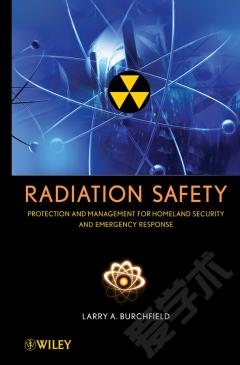


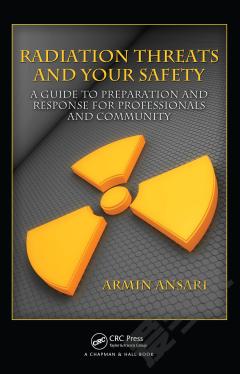
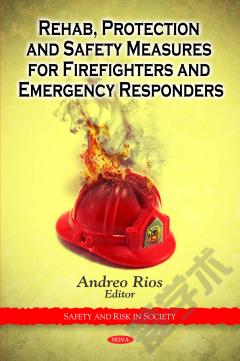
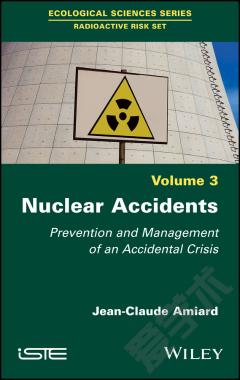
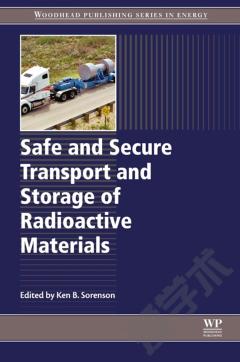

 京公网安备 11010802027623号
京公网安备 11010802027623号